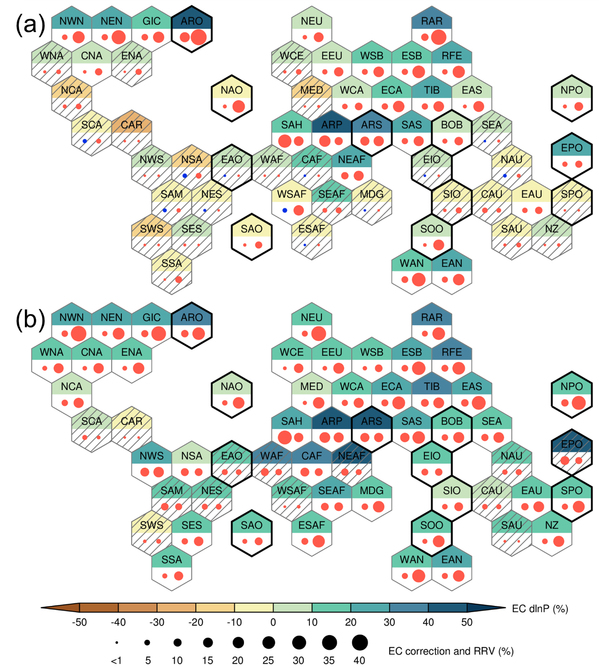ZJU scientists propose a novel approach to reducing uncertainty in regional precipitation projections
Precipitation plays a pivotal role in shaping global climate patterns and ecosystems. Yet, amidst the complexities of climate models, uncertainties loom over the projected changes in the hydrological cycle under global warming. These uncertainties pose formidable challenges to disaster-related risk management and policy formulation. DAI Panxi, an associate professor from the School of Earth Sciences at Zhejiang University, teamed up with other researchers to conduct a groundbreaking study in this regard.
The study, published in the Proceedings of the National Academy of Sciences on March 4, delves into climate projections, focusing on mean and extreme precipitation on both global and regional scales. By leveraging observed past warming trends, DAI Panxi and her collaborators unveiled a significant reduction in the uncertainty of future regional precipitation estimates. Their findings provide crucial scientific evidence and valuable insights for assessing the evolving landscape of disaster costs related to climate change and formulating response policies.
One of the central questions in climate studies revolves around the anticipated changes in the hydrological cycle under global warming. While climate models unanimously predict that the hydrological cycle in most regions globally will intensify with warming, the magnitude of this increase varies substantially among models. Previous studies are predominantly focused on the global mean precipitation changes, paying less attention to the significant regional variations crucial for effective policymaking and community resilience.
DAI Panxi and her collaborators adopted the emergent constraint method, which first establishes an empirical relationship between a simulated (and observable) current climate variable (predictor) and the future change and then utilized the observed value of the predictor to modify the simulated prediction. They identified a significant correlation between precipitation changes and the climate sensitivity in climate models. Importantly, this correlation holds true for most areas on the regional scale, something that has been overlooked in previous research. Through the dynamic and thermodynamic decomposition of mean and extreme precipitation, the study shed light on the underlying mechanisms driving this correlation, attributing it to the profound influence of atmospheric warming on water vapor content. On this basis, the study refined future precipitation projections from multiple models using the observed global warming trend, reducing uncertainties in precipitation projections for various regions.

Fig. 1. Constrained future (a) mean and (b) extreme precipitation changes in the 58 IPCC AR6 reference regions. Within each hexagon, the filled color of each hexagon denotes the constrained projection, and the left and right dots denote the EC-induced correction and relative reduction of variance (RRV), respectively. The red (blue) dot denotes a positive (negative) value after subtracting the constrained from unconstrained value and the size of the dot is proportional to the absolute value. The hexagons without the diagonal lines indicate that the emergent relationship is statistically significant at the 95% confidence level. The hexagons for ocean regions are highlighted with bold borders.
By refining future precipitation projections across multiple models, the study can also help to reduce uncertainty of other climate impacts such as droughts, vegetation dynamics, and disaster risks. In doing so, it addresses public concerns regarding future precipitation changes while furnishing policymakers and stakeholders with valuable information for informed decision making.
More information: Dai, P., J. Nie, Y. Yu, and R. Wu, 2024: Constraints on regional projections of mean and extreme precipitation under warming. Proceedings of the National Academy of Sciences, 121, e2312400121, https://doi.org/10.1073/pnas.2312400121.